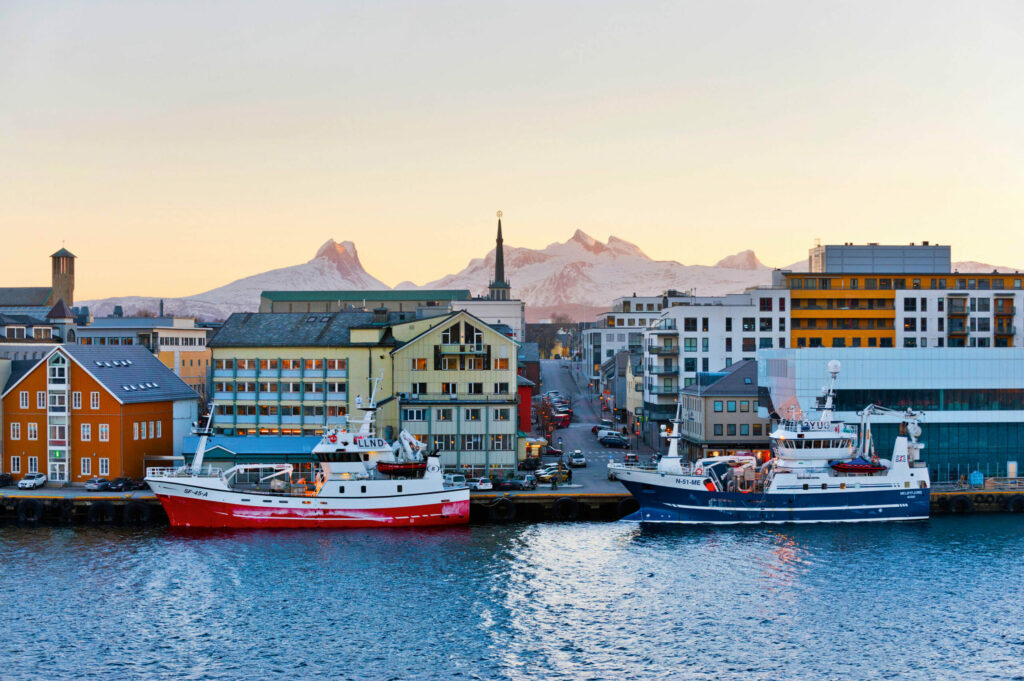A day after my Estonian smoke sauna, I found myself tracing the frozen outline of nearby Lake Peipus, 40km from Tartu, on the border with Russia. Huddled along its shoreline are the communities of Varnja, Kasepää and Kolkja, whose clapboard houses, painted in weathered shades of green and yellow, are home to the Old Believers. These are the descendants of Orthodox Christians exiled from Russia in the 1600s after the Tsar unified the church and instilled traditions such as switching from two to three fingers when making the sign of the cross. The Old Believers refused to change, so were cast out.
In the 1930s, some 10,000 lived in Estonia; today, around 600 call these three villages home. They mostly keep to themselves, except when selling onions. These they cultivate in half-a-metre-high beds to be especially pungent and delicious.
“At the end of August and in early September, these lanes are lined with stalls selling their onions,” said my guide, Kristiina Tammets, as we drove towards the just-refurbished Museum of Old Believers in Kolkja.
Historically, these exiles lived side by side with Baltic Germans and rural Estonians. To honour this heritage, a special ‘Onion Route’ has been created to introduce visitors to the area’s traditional foods, churches, farms and crafts, as well as the local castle, Alatskivi, which was modelled on the UK’s Balmoral.
Women in traditional Estonian dress prepare for Tartu’s opening ceremony as a Capital of Culture – though the title extends far beyond the city’s fringes and takes in the surrounding southern region (Emma Thomson)
Women in traditional Estonian dress prepare for Tartu’s opening ceremony as a Capital of Culture – though the title extends far beyond the city’s fringes and takes in the surrounding southern region (Emma Thomson)
Lilli Tarakanov, manager of the Kolkja museum, met us at her workplace just as the snow started flurrying. She offered us homemade lumps of spice-infused sugar to stow in our cheeks as we sipped the unsweetened tea that she dispensed from a samovar. Between sips, I asked her whether the culture of the Old Believers was in danger of being lost, given how few were left. She shook her head knowingly.
“The people who grew up here have already received our traditions, such as religious classes in school and learning the old Russian alphabet,” she told me.
The museum rooms were laid out like a home and were minimalist to look at, yet every sofa and table was covered in lace.
“For us, it’s important that when you step in the house, it feels just washed – very white,” Lilli said, “We don’t have a traditional national costume, but embroidering with lace gives us our own style.”
Far more flamboyantly dressed are Estonia’s Indigenous Seto people, famed for their folk-style red embroidery, chunky silver necklaces and UNESCO-listed polyphonic ‘leelo’ singing. In Tartu, I met Setomaa guide Helen Külvik, who explained how things had changed.
“Until the 1960s, Sámi language and dress were forbidden in Norway by the government”
“Nowadays our Seto heritage is something to be proud of, but it hasn’t always been so,” she told me. “Until recently, it was considered shameful to be Seto, but in the last 20 years this has turned around. Now people are looking for their Seto roots.”
In some ways, the story of the Seto is similar to that of Norway’s Sámi, in that there are attempts now being made to reintegrate both their cultures. In the city of Bodø, I sat in on a rehearsal of Gïedtine (Who Owns the Wind?), a Sámi-language play that touches on the true story of the illegal Fosen wind farms that were built on their reindeer pastures.
Relations between the Sámi, the Indigenous Peoples of Sápmi (Lapland) – a region spanning the northern parts of Norway, Sweden and Finland – and the Norwegians hasn’t always been easy. For over a century, up until the 1960s, Sámi language and dress were forbidden in Norway under the government’s ‘Norwegianization’ programme.
Árran 360º showcases five films by Sámi directors inside a lavvu (traditional Sami tent) as part of Bodø’s 2024 celebrations (Emma Thomson)
Árran 360º showcases five films by Sámi directors inside a lavvu (traditional Sami tent) as part of Bodø’s 2024 celebrations (Emma Thomson)
“I have seen how it has affected my mother, my grandmother, all my friends and their families. It’s a story that is very hard. You feel in 2024 that we should be able to take space, have rights, and that it should be the norm,” said Emma Rustad, an actor in Gïedtine.
It would’ve been easy to gloss over these tensions; instead, the Capital of Culture win has been used as a banner that everyone can gather under. The opening week was deliberately chosen to coincide with ‘Sámi Week’, a yearly festival celebrating this heritage.
“Traditionally, Bodø forgot Sámi culture; now we’re melting together,” explained Kristoffer Dolmen, senior curator at Bodø’s Nordland Museum, which hosts a year-long exhibition of Sámi artefacts.
The finale of Bodø’s opening ceremony was performed by Sámi activist Ella Marie, who sang a hauntingly beautiful joik (a traditional form of Sámi song). As it drew to a close, she opened her coat to reveal the words ‘This is Sami Land’ sewn into the lining. It was a powerful moment.
Source link : https://www.wanderlustmagazine.com/inspiration/shining-a-light-on-europes-little-known-capitals-of-culture/
Author :
Publish date : 2024-07-23 10:10:41
Copyright for syndicated content belongs to the linked Source.
